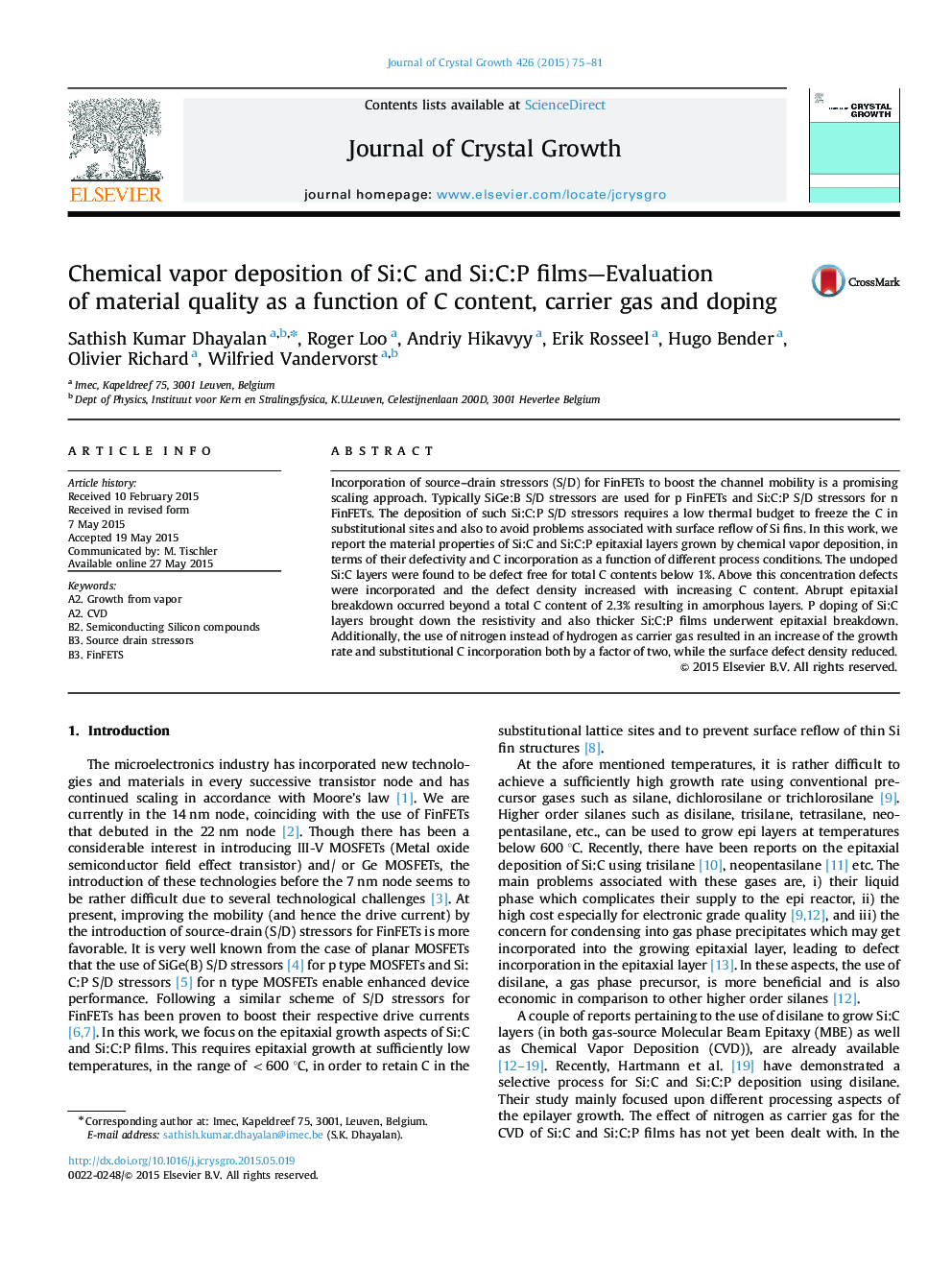| Article ID | Journal | Published Year | Pages | File Type |
|---|---|---|---|---|
| 1789898 | Journal of Crystal Growth | 2015 | 7 Pages |
Abstract
Incorporation of source-drain stressors (S/D) for FinFETs to boost the channel mobility is a promising scaling approach. Typically SiGe:B S/D stressors are used for p FinFETs and Si:C:P S/D stressors for n FinFETs. The deposition of such Si:C:P S/D stressors requires a low thermal budget to freeze the C in substitutional sites and also to avoid problems associated with surface reflow of Si fins. In this work, we report the material properties of Si:C and Si:C:P epitaxial layers grown by chemical vapor deposition, in terms of their defectivity and C incorporation as a function of different process conditions. The undoped Si:C layers were found to be defect free for total C contents below 1%. Above this concentration defects were incorporated and the defect density increased with increasing C content. Abrupt epitaxial breakdown occurred beyond a total C content of 2.3% resulting in amorphous layers. P doping of Si:C layers brought down the resistivity and also thicker Si:C:P films underwent epitaxial breakdown. Additionally, the use of nitrogen instead of hydrogen as carrier gas resulted in an increase of the growth rate and substitutional C incorporation both by a factor of two, while the surface defect density reduced.
Related Topics
Physical Sciences and Engineering
Physics and Astronomy
Condensed Matter Physics
Authors
Sathish Kumar Dhayalan, Roger Loo, Andriy Hikavyy, Erik Rosseel, Hugo Bender, Olivier Richard, Wilfried Vandervorst,
